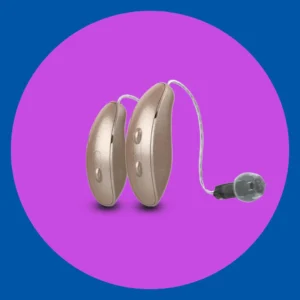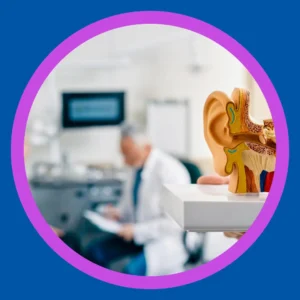Choosing the Best Hearing Aids for Severe Hearing Loss
If you’re looking for the best hearing aids for severe hearing loss, you’re in the right place. Severe to profound hearing loss affects not just your ability to hear, but how you live, work, and connect with the world. Thankfully, today’s hearing aid technology has evolved to meet these challenges.
This article will help you understand what severe hearing loss means, explore top-rated hearing aid models, and guide you through important features and considerations. Whether you’re seeking clear conversations, reliable streaming, or long battery life, there’s a powerful hearing aid built for your needs.
What is Severe to Profound Hearing Loss?
Severe to profound hearing loss is the most intense level of hearing loss. It means your hearing thresholds start at 70 decibels or higher. If everyday sounds like vacuum cleaners or conversations sound muffled or silent, this might describe your experience.
Most people with this degree of hearing loss cannot hear speech without amplification. They often rely on lip reading, written communication, or sign language. Severe hearing loss can be caused by noise exposure, aging, illness, or genetics. It can develop gradually or come on suddenly, requiring prompt medical attention.
What Does It Sound Like?
Imagine trying to understand someone whispering from across a busy street. That’s what speech might sound like to someone with severe hearing loss. Without amplification, even the loudest speech may be inaudible.

Can Hearing Aids Help Severe Hearing Loss?
Yes, hearing aids can help. But they must be carefully selected and expertly programmed to match your unique hearing profile. Well-fit devices allow people to detect environmental sounds and, in many cases, participate in conversations again.
For some people, especially those with profound hearing loss or limited speech understanding, cochlear implants may be recommended. But for many, advanced prescription hearing aids remain a strong first option.
To better understand your treatment plan, start with a professional consultation. You can prepare by reading Questions to Ask During a Hearing Consultation and Fitting.
Key Features in the Best Hearing Aids for Severe Hearing Loss
Not all hearing aids are created equal. Here’s what to look for when choosing one:
Powerful Amplification
Devices must deliver enough volume without distortion. Models designed for severe hearing loss often feature ultra-power receivers or larger batteries for this reason.
Advanced Noise Reduction
Background noise can make conversations impossible. Look for hearing aids that use directional microphones and digital noise filtering.
Feedback Cancellation
Powerful devices can produce whistling sounds (feedback). Modern hearing aids use algorithms to suppress this.
Rechargeable or Long-Lasting Batteries
Many severe-loss hearing aids use larger disposable batteries (size 13 or 675). Others offer strong rechargeable options.
Connectivity
Bluetooth streaming can improve your phone calls, TV watching, and listening to music. Models like Phonak and ReSound offer full-featured connectivity.
Compatibility with Accessories
External mics, remote controls, and TV streamers can further improve speech understanding in complex environments.
Comfort and Fit
Severe-loss devices are usually behind-the-ear (BTE) models paired with custom earmolds to keep amplified sound from escaping.
Durability
Look for models with high IP ratings for water and dust resistance. This increases their lifespan and reliability.
Top Hearing Aid Models for Severe Hearing Loss: In-Depth Comparisons That Matter
The best hearing aids for severe hearing loss offer more than just volume. They combine advanced features like speech enhancement, tinnitus relief, Bluetooth streaming, and extended battery life. Each model we’ve listed below was selected for its ability to meet the specific needs of people with severe to profound hearing loss.
Phonak Audéo Sphere™ Infinio: The Smart All-Rounder
The Phonak Audéo Sphere Infinio is engineered for people who demand powerful performance in everyday life. It uses AutoSense OS Infinity, an AI-based system that adjusts seamlessly to any environment, whether you’re at a crowded family event or enjoying a quiet dinner.
It also includes myPhonak app integration for remote adjustments, universal Bluetooth streaming, and motion-sensor wellness tracking. It’s especially ideal for those who want a rechargeable option without sacrificing sound quality.
Phonak Naída Paradise P-UP: Built for Affordability Without Compromise
The Naída Paradise P-UP offers robust performance at a lower price point. It’s an ultra-power BTE hearing aid with size 675 batteries and smart features like motion detection and hands-free calling. It supports up to eight Bluetooth connections and provides enough gain for even the most severe hearing losses. Though it lacks a rechargeable version, it’s ideal for users who prioritize reliable amplification on a budget.
Signia Motion Charge&Go BTE: Power That Lasts All Weekend
For those who dread running out of battery mid-day, Signia’s Motion Charge&Go offers a standout solution. Its 61-hour rechargeable battery outlasts every other model in its category. The AI-powered Signia Assistant personalizes your settings based on your environment and preferences. A quick 30-minute charge provides several hours of additional use, making it convenient for people on the go.
Starkey Genesis AI ITE: Advanced Tech in a Custom Fit
One of the only rechargeable in-the-ear hearing aids for severe hearing loss, the Starkey Genesis AI ITE combines personalization with power. It includes features like fall detection, health tracking, and advanced sound processing. Though slightly larger than other ITE models, it suits those who prefer custom-molded devices with cutting-edge capabilities.
Starkey Evolv AI BTE: Balanced Value for Everyday Use
This hearing aid packs a punch with AI-powered features that suppress background noise, enhance your voice, and detect falls. With a long-lasting rechargeable battery, comfortable fit, and easy-to-use Thrive app, it’s perfect for people who want a feature-rich option that works well in social and work settings.
ReSound Nexia RIE: Designed With Tinnitus Relief in Mind
For those dealing with both severe hearing loss and tinnitus, the ReSound Nexia RIE is a top performer. With rechargeable and disposable options, strong directional microphones, and Auracast streaming technology, it ensures clarity in conversations and background noise management. The ReSound Smart 3D app gives users full control of their settings and tinnitus masking sounds.
Unitron Stride B-UP and Moxi Vivante: Proven Power With Flexibility
Unitron’s ultra-power BTE (Stride) and RIC (Moxi Vivante) models are built for long-term use and comfort. These models provide significant gain while allowing customization for lifestyle needs. They’re especially good for people who want flexibility in how their hearing aids respond to different sound environments.
Whether you prioritize battery life, tinnitus relief, or advanced connectivity, there is a hearing aid for your needs. Choosing the right model ensures long-term satisfaction and the ability to re-engage with the sounds that matter most.

Finding the Right Hearing Aid Style for Your Needs
When dealing with severe to profound hearing loss, hearing aid style plays a major role in effectiveness and comfort. Most people with this level of hearing loss require behind-the-ear (BTE) models, but that doesn’t mean one size fits all.
Behind-the-Ear (BTE): The Most Common Choice
BTE hearing aids are the gold standard for severe hearing loss. These devices sit behind the ear and connect to a custom earmold through tubing. The earmold fits snugly into your ear canal and helps keep amplified sound from leaking out. This design allows for maximum power, reduced feedback, and better sound stability.
The size of the device also allows for:
- Larger and longer-lasting batteries
- Bigger processing chips for better sound quality
- Manual control buttons for volume or program changes
- Stronger Bluetooth antennas for reliable streaming
BTE hearing aids are compatible with accessories like TV streamers and external microphones, which can further improve clarity in noisy places.
Receiver-in-Canal (RIC): A Discreet Yet Capable Option
Some RIC models, like the Phonak Audéo Sphere Infinio and ReSound Nexia, now support higher power receivers. These provide a balance of performance and discretion. If your hearing loss is severe but not yet profound, a RIC might be a good fit.
However, RIC styles may be more prone to feedback in higher gain settings and require careful programming and earmold fit.
In-the-Ear (ITE): Ideal for Discretion and Ease of Use
Traditionally, ITE models weren’t strong enough for severe hearing loss. But new models like the Starkey Genesis AI ITE have changed that. These custom-fit hearing aids now offer rechargeable batteries and excellent sound quality.
ITE styles may be preferable if:
- You have dexterity issues and find BTE tubing difficult
- You want fewer visible components
- You need built-in features like fall detection and fitness tracking
However, ITE models may not be appropriate for very small ear canals or when maximum amplification is needed.
The right style depends on your degree of hearing loss, ear shape, lifestyle preferences, and cosmetic goals. A hearing care provider will help you decide which option delivers the best results for you.
How Hearing Loss Affects Your Everyday Life
Untreated severe hearing loss impacts much more than just your ability to hear. It affects your career, safety, social relationships, and mental health.
Hearing Loss at Work
Workplaces depend on communication. Whether you’re answering phones, attending meetings, or talking with coworkers, hearing loss can make you feel left out or less confident. This can affect your performance, job satisfaction, and even income.
If you’ve noticed difficulty at work, read our article on how hearing loss affects you at work. You’ll find tips and insight into accommodations that can help.
Hearing Loss and Personal Safety
Everyday safety cues are often sound-based: fire alarms, sirens, car horns, or someone shouting your name. Severe hearing loss can dull or erase those cues completely. This increases the risk of missing emergencies, traffic situations, or falls.
The best hearing aids for severe hearing loss provide not just sound, but sound awareness. Features like fall detection, motion sensors, and directional microphones help users stay alert and responsive to their surroundings.
Social Isolation and Mental Health
When you can’t follow conversations, socializing becomes exhausting. Many people begin to withdraw. They stop attending events, answering the phone, or spending time in noisy environments. Over time, this isolation can contribute to depression, anxiety, or cognitive decline.
Wearing powerful, well-fit hearing aids can reverse this trend. They restore not just sound, but confidence. They allow you to rejoin conversations, attend family gatherings, and enjoy the sounds of life again.
What the Research Tells Us About Treating Severe Hearing Loss
The benefits of treating severe hearing loss are more than anecdotal. They’re backed by science.
A peer-reviewed study from PubMed Central found that people with hearing loss who use hearing aids show significant improvement in quality of life, communication, and emotional well-being. These improvements were especially pronounced among those with more severe hearing loss.
In another important report, researchers from The Lancet Healthy Longevity emphasized the cognitive benefits of early and consistent hearing treatment. Untreated hearing loss has been linked to increased risk of dementia, falls, and social isolation—all of which can be mitigated through timely use of hearing aids or cochlear implants.
These findings support what hearing care professionals have long observed: treating hearing loss is not optional. It’s essential for maintaining independence, mental sharpness, and overall well-being.
Hearing Aids to Avoid for Severe Hearing Loss
Not every device is up to the task. Here’s what to skip:
- OTC hearing aids: These lack the amplification power and features required for severe loss.
- CIC or IIC styles: These tiny in-canal models use small batteries and may not provide enough gain.
- Size 10 battery models: These batteries drain quickly and may interrupt daily use.
Stick with models built to support your degree of hearing loss.
Summary: Top Picks for Severe Hearing Loss
| Model | Best For | Battery | Key Feature |
| Phonak Audeo Sphere Infinio | Best Overall | Rechargeable or disposable | AutoSense OS Infinity |
| Starkey Evolv AI BTE | Best Value | Rechargeable | Fall detection, AI processing |
| Phonak Naída Paradise P-UP | Most Affordable | 675 disposable | Motion detection |
| Starkey Genesis AI ITE | Rechargeable ITE | Rechargeable | Health tracking, fall alerts |
| ReSound Nexia RIE | Best for Tinnitus | Rechargeable or disposable | Auracast streaming |
| Unitron Stride B-UP | Most Powerful BTE | Disposable | Ultra power performance |
Ready to Find the Right Hearing Aid? Let’s Make It Simple
You don’t have to navigate this journey alone. If you or someone you love has severe to profound hearing loss, the right hearing solution can restore clarity, confidence, and peace of mind.
At Stanford Hearing, we offer:
- Personalized consultations
- Access to industry-leading brands like Phonak, ReSound, Starkey, and Unitron
- Advanced diagnostic testing
- Real Ear Measurement for precise fitting
- Ongoing support and fine-tuning
Whether you’re ready to try a powerful BTE device or want to explore rechargeable in-the-ear options, we’re here to help you take the next step.
Let’s find your hearing solution together. Get in touch with Stanford Hearing.

